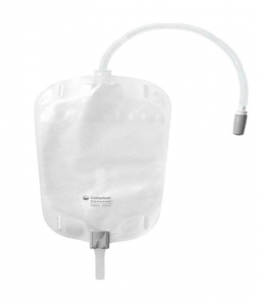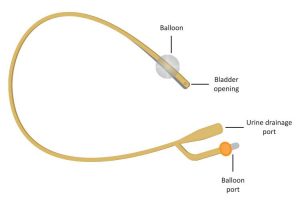Introduction to my catheter failure
 I had a catheter failure and had to come up with creative solutions to allow me to keep urinating safely and cleanly as a paraplegic.
I had a catheter failure and had to come up with creative solutions to allow me to keep urinating safely and cleanly as a paraplegic.
I urinate into a bag, attached to my leg, due to an accident in 2009. I acquired a spinal cord injury (SCI) and click here to read about the accident.

One of the difficulties with paraplegia involves urinating, and one solution is to have a suprapubic catheter.
I had an operation to make a hole, just below the belly button, and a catheter was inserted through the hole. It is similar to a long plastic tube that is about ten centimetres inside the bladder. The other end connects to the leg bag.
The catheter stays in the bladder due to an inflatable balloon. Inflation occurs after insertion by pumping sterile water into the other end of the catheter.
Leg bags are around $10, and $40 for a catheter, and usually, they are high quality and don’t fail. Leg bags are changed weekly, and the catheter every six weeks.
Catheter Failure!
The district nurse changed my catheter and departed. I noticed a drop of water on my track pants but wasn’t concerned about it. Around 7 pm I noticed a small pool of water in the area and discovered the water was coming out of the balloon port. The balloon was deflating slowly and this presented a problem, as the catheter could come out. Fortunately, urine continued to drain into the leg bag.
Solution 🙂
I didn’t want to ruin the evening of a nurse, and I wanted to have a swim. As long as I kept light pressure on the tube, it shouldn’t come out. The pressure would be applied by my underwear, and whatever I was wearing over the undies. I finished my swim wearing underwear and bathers, and headed back to bed. I carefully took off my clothes, and dried myself, without pulling out the catheter. Usually, I would wear no underwear to bed, as this was better for my skin. This time, I wore underwear to help keep the catheter in my bladder.
The next day
It was my toileting and shower day, and I didn’t want to take my underwear off, as it was helping to keep the catheter in my bladder. How could I insert the enemas, and have a poo? I grabbed scissors and carefully made a hole in my underwear, and then ripped them open to make a bigger passageway.
Following a successful poo, I had a shower and ensured the underwear got a good wash. I went back to bed, dispose of the undies, and carefully dry myself. After getting dressed, I arranged for another nurse to change my catheter.
You may want to read about how I attend to toileting and showering here.
The problem batch
This wasn’t the first time a catheter failed with a leaking balloon. Fortunately, the nurses record the batch number of each catheter that is used. We found the batch number of the previous failure, and it matched the recent failure. I disposed of those catheters, and intend to contact the supplier.
Living with a disability involves creative solutions to problems.
Click here for information about the blog WheelchairJohn. Or here for the blog that shares how I go to the toilet.
More information about me is found at johnduthie.com
